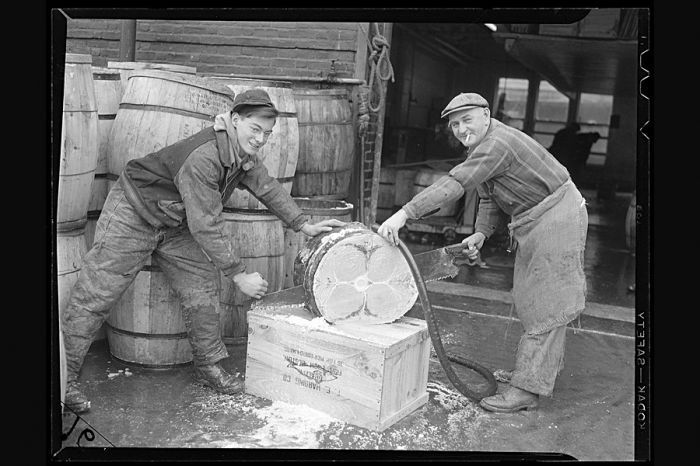Barrel By...

“I have noticed people in tasting rooms talking about American versus French oak barrels in regard to winemaking. What is the difference? Is one better than the other?” - Randy, Portland
There are actually several differences, but if you ask me, quality isn’t one of them; it’s more about preference.
The wood for French oak barrels comes from several different forests; Allier, Limousin, Nevers, Tronçais and Vosges are considered the best. Each has its own micro-climate and soils, affecting the wood, and in turn, the wine.
French oak is split along its natural grains to create staves. After the wood is split, the staves are dried in open air for about 24 months. Because of the quality of the forests, the reputation of the cooperage and the time-intensive production, French oak barrels often cost between $500 and $1000.
The way the French barrels express themselves in wine is considered to be more delicate and less “oaky” than their American counterparts, imparting notes of vanilla bean, cedar and clove — among others. Its subtle flavor profile is desirable for wines such as Pinot Noir, which is more sensitive to the wood’s influence. French oak’s tighter grains are also believed to have slightly higher tannins levels, helping the wine to age.
American oak barrels come from several different forests, mostly in Midwestern states like Missouri, but also from Oregon and Virginia. Unlike French oak, its origin is of minor significance, placing the value with the reputation of the cooperage.
Traditionally, American oak barrels were made by sawing the wood into staves — rather than splitting them — and drying them in a kiln — as opposed to open air. These barrels impart stronger oak flavors with slightly sweeter notes like vanilla extract, coconut, sawdust and dill. With that says, many American coopers have recently incorporated more French techniques to soften the character of their barrels. Reduced production time and shipping costs are two reasons American oak barrels are generally less expensive — new barrels cost between $200 and $500.
There is no firm rule dictating who uses what type of barrel; and certainly, though the prices might lead you to believe differently, there is no quality difference between the two. It really comes down to how a winemaker wants to make a particular wine. For example, because of its strong effect on flavor, American oak is typically used on heartier wines like Syrah, Cabernet, Zinfandel and Malbec. In fact, in some Old World regions, such as Rioja in Spain, American oak is preferred to add more muscle and complexity.
Cooperage competition has increased over the years. France and the U.S. are joined by Hungary, Slovenia and even Russia in the barrel market. Different types of wood have also made the industry more interesting. Barrels made of chestnut, pine, redwood and acacia simply add to the winemaker’s toolbox, ultimately allowing consumers greater choices and more to discuss.
Cheers, Jennifer Cossey
I look forward to receiving more of your questions. Email me at jcossey@oregonwinepress.com to submit your questions and I’ll see you next month!












